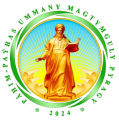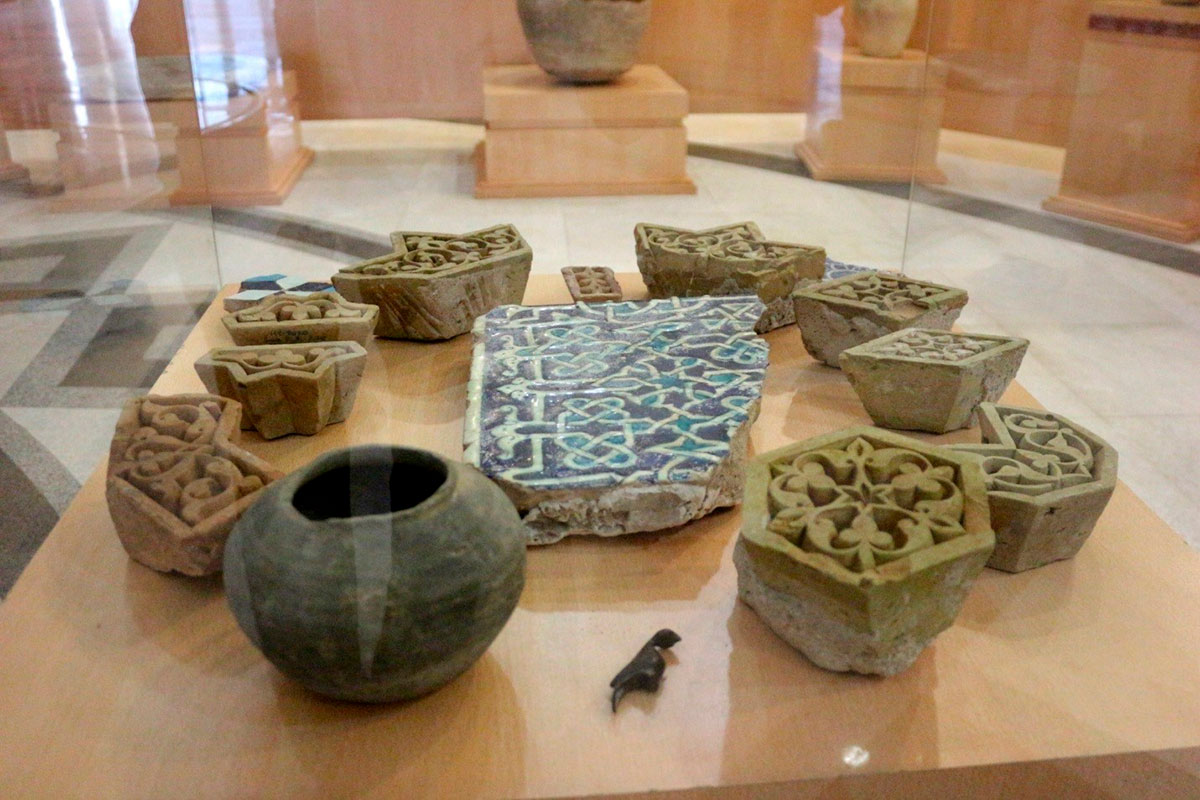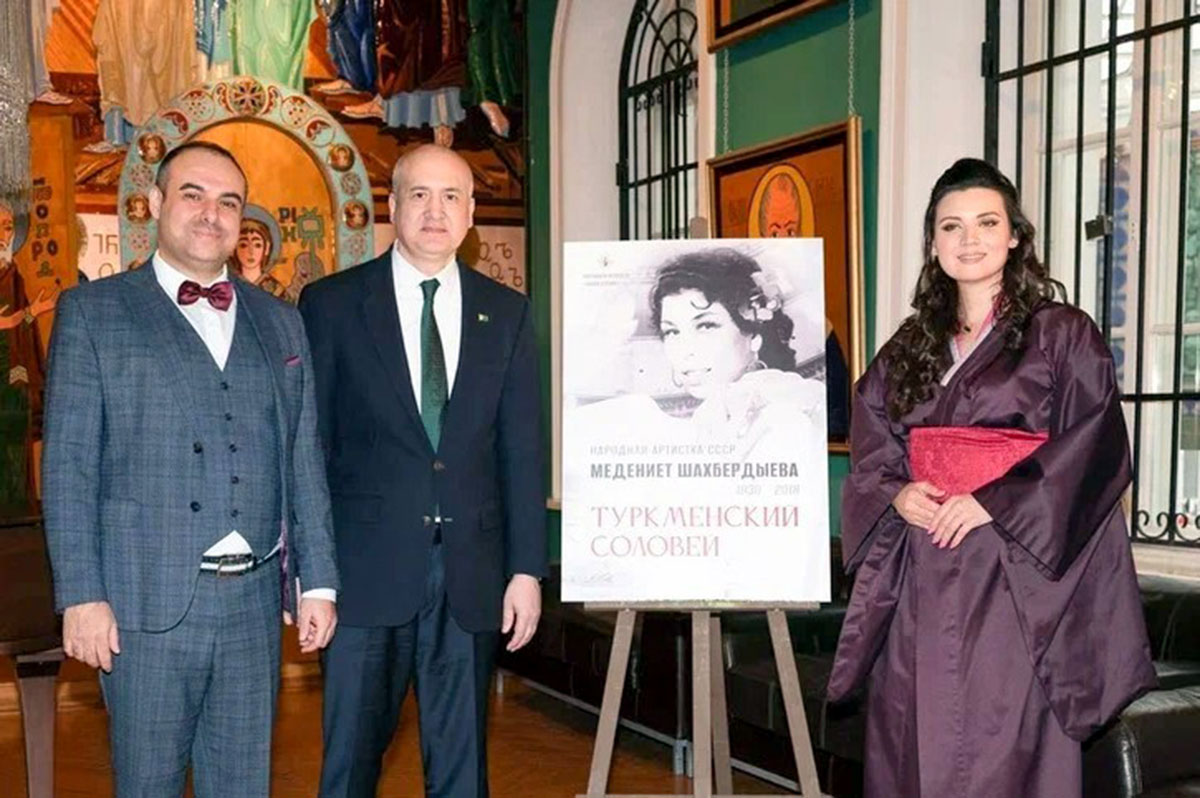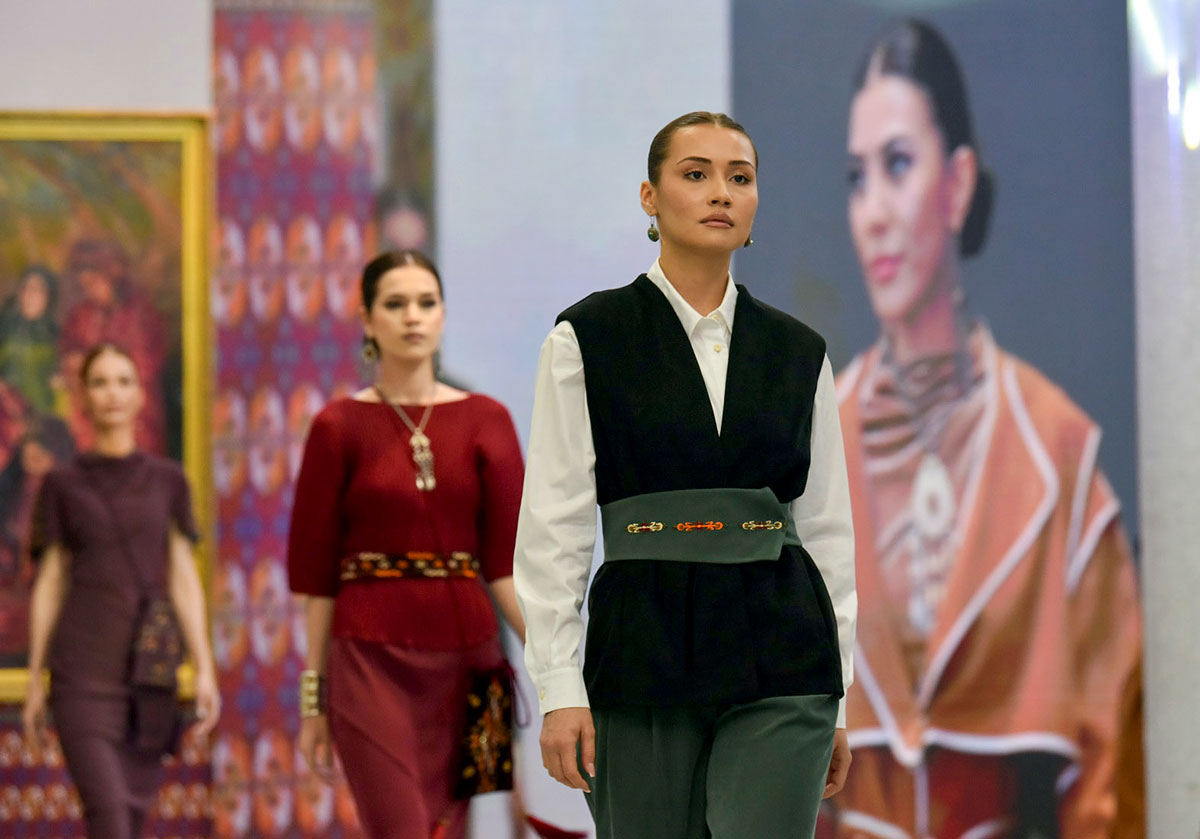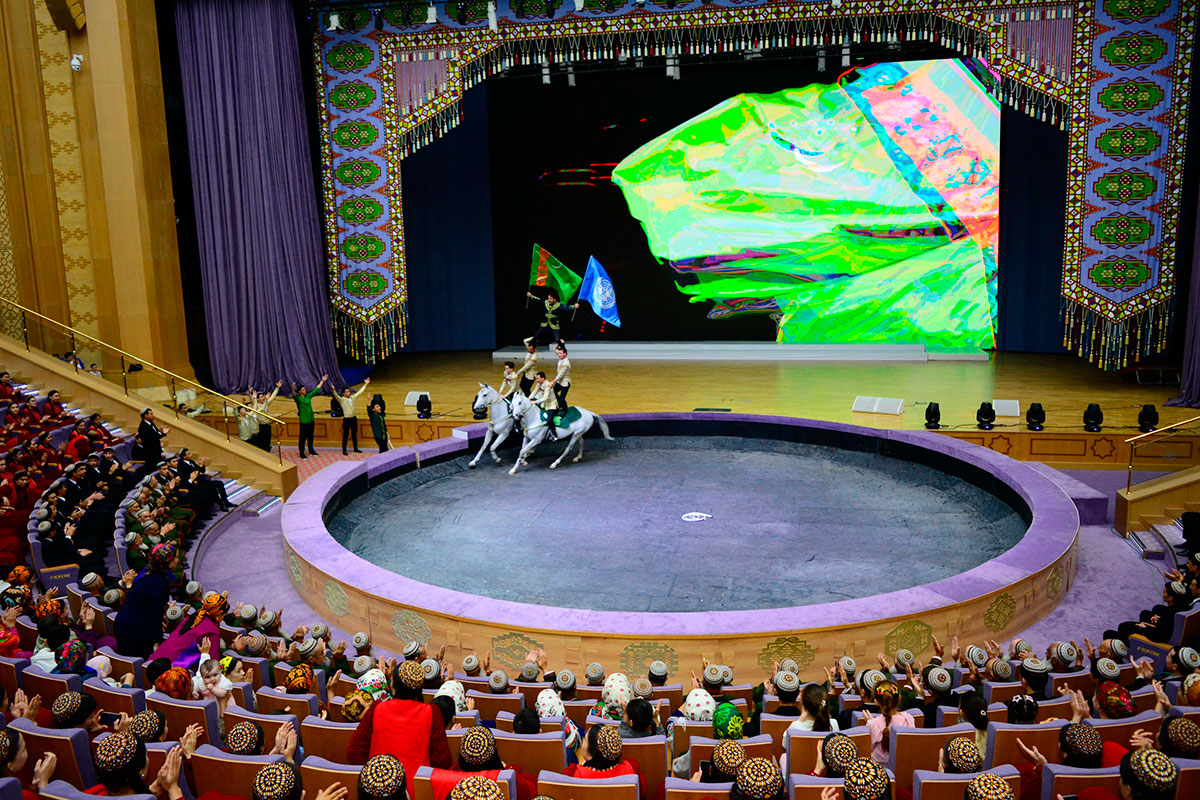Various types and forms of architectural decoration were actively used in the Middle Ages by architects to decorate the majestic buildings of ancient Gurgench.
This is convincingly evidenced by the archaeological founds discovered during excavations in various periods of time on the territory of the “Kunya-Urgench” State Historical and Cultural Reserve, a large number of which were transferred for storage to the Dashoguz Velayat Historical and Local Lore Museum.
Among them are terracotta elements of various facing parts, which are a clear proof of the high level of ceramic art of our ancestors. Various terracotta facing parts, shaped as five, six and octagonal stars, with plant-based designs depicted on them, elements with glazed ceramics and architectural glazed tiles are striking in their beauty and elegance.
It is no coincidence that the amazingly subtle art of the architects and decorators of ancient Horezm attracted the attention of a large number of eminent scientists. For example, in the monograph by V.I. Pilyavsky "Kunya-Urgench", much space is devoted to the architectural ornamentation of the Kunya-Urgench buildings. The ornamentation is described by him in the form of geometric plant and epigraphic patterns.
The carved majolica mosaic used in the mausoleum of Turabek-hanym is mentioned in the works of the famous scientist A.Yu. Yakubovsky, in the work of B.P. Denike "Architectural Ornament of Central Asia". By the way, many authoritative specialists believe that in the cladding of the mausoleum of Turabek-hanym, the mosaic ornament reached its highest peak.
Among the various terracotta facings found during excavations are slabs with geometric and plant ornaments of deep carving, facing slabs, partially covered with turquoise glaze. Such tiles with high relief, the inscriptions on which and the main elements of the plant ornament were covered with turquoise glaze, are believed to have been used to cover the facade of the "Portal of the Kerven-saray". Also, within the monument "Portal of the Kerven-saray", mosaic tiles were found in various periods of time, made by the technique of a set of colored glazed sawn elements on a porridge base, possessing a rich color range.
Many works by other authors are devoted to the study of the architectural structures of medieval Horezm, whose capital was ancient Gurgench. The monuments of Horezm are described in the work of the English traveler G. Lansdell, and the works of the famous archaeologist and historian-orientalist M.Ye. Masson are devoted to them.
The analysis of the architectural decoration of the monuments of ancient Gurgench, conducted over many years, confirms that in the development of the architectural tiled decoration of Horezm, starting from the 14th century, a special flourishing is observed, clearly expressed in the design of such monuments as the mausoleums of Najim-ad-din Kubra, Turabek-hanym, the monument "Kerven-saray" and others, which at the same time testifies to the functioning of their own ceramic school on these lands, which had a creative originality and traditions.
